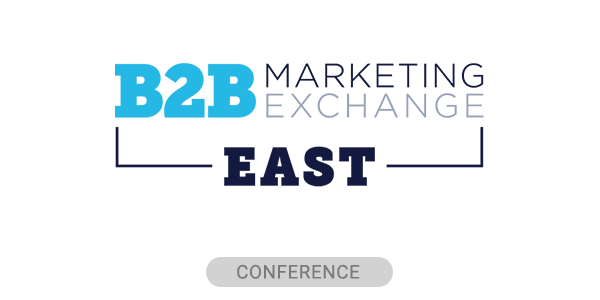B2B marketers face mounting pressure to demonstrate clear revenue impact for the content they produce as the old playbook of chasing metrics like clicks and downloads is no longer enough. Today, success is measured by tangible business outcomes, forcing a shift toward strategies that prove content’s direct contribution to pipeline and sales.
PathFactory recently released its 2025 Benchmark Report that covers how this new landscape— increasingly impacted by artificial intelligence (AI)— demand one focused on quality, engagement, and measurable results. The report details how marketers can build a stronger business case for their content budgets and provides a clear roadmap for moving beyond “fluffy” content by delivering actionable, substance-driven guidance that modern buyers demand.
PathFactory’s EVP of Marketing and Operations Katie Jones sat down with us to discuss these issues as well as the power of using emotional narratives to make technical topics more compelling, the rise of interactive experiences and engagement metrics that truly signal content quality.
Demand Gen Report (DGR): Katie, thanks for doing this for us. Which content formats are actually driving pipeline, and where should the focus of production efforts be?
Katie Jones: My pleasure. While blog posts are the most-created content format, our research suggests a volume-driven approach is leading to diminishing returns due to market saturation. This is likely to get even worse with the prevalence of AI, which makes it easier than ever to quickly pump out content.
Instead of just creating more blogs, we found that focusing on high-performing formats like case studies, videos, and webinars drives pipeline more effectively. In fact, we’ve found that almost every closed-won deal at PathFactory has a webinar as a key attribution touchpoint. Webinars remain a cornerstone of B2B marketing, with nearly two-thirds of respondents actively using them.
Budget Considerations
DGR: What’s the most effective way to build a business case for a larger content marketing budget?
Jones: Demonstrating concrete business outcomes. Today’s marketers are highly confident in their ability to measure ROI, with the leading success metric being revenue impact, followed closely by lead quality and conversion rates. This shows a clear shift away from “vanity metrics” toward tangible business results.
To prove your worth, it’s integral to use a platform that can provide these business-outcome metrics. Instead of focusing on simple views and clicks, you can look at the true engagement on your content and how that affects your sales cycle. When content is evaluated through a sales lens, it’s much easier to secure greater investment.
DGR: What’s the real problem with most B2B content today, and how can marketers move beyond “fluffy” content?
Jones: The main problem is that it’s “fluffy” and lacks substance. Modern buyers are looking for actionable solutions and insights, not generic information.
Actionable content is key. Several survey respondents shared that content with clear takeaways outperformed purely informational material. The key here is to think about providing next steps in your content that help the buyer, not just sell to them. In our benchmark report, for example, we like to provide an “action plan” section that recommends three things our audience can do to improve their own content.
I also believe that real recognize real. When real people build authentic, helpful content, audiences recognize it for what it is. Fluff will always be seen through. By creating genuine, practical content, you build trust and become a valuable resource for your audience.
DGR: When should content be gated versus being ungated as to maximize reach and lead quality?
Jones: Gating content is a viable strategy for lead generation, with 83% of marketers regularly gating content and 65% reporting it generates a significant portion of their leads. The report emphasizes that this strategy works best with high-value, research-based content, like industry or analyst reports, as buyers are willing to trade their information for truly valuable insights.
However, if your organization’s leadership understands that marketing should be a vehicle to educate buyers, and not just qualify leads, then ungating is the way to go. You have to believe that you won’t see the ROI a week after a report is released and that measuring MQLs isn’t how buyers buy anymore. If your organization is sophisticated enough to see that a content engagement platform can track buyer behavior and measure your contribution to revenue, ungating assets becomes a powerful way to maximize reach and brand visibility.
DGR: How can emotional narratives and social proof be used to make technical B2B content more compelling?
Jones: Authenticity is what counts. People want to hear from other people in their shoes. Marketing is hard, and we want to know our peers are achieving real results. Emotional narratives and social proof can make technical B2B content more compelling by adding a human element. The report notes that content with “relatable emotional narratives” and “powerful social validation” performs well. You can:
- Incorporate customer stories or expert voices into high-traffic content to build trust;
- Use authentic, re-shared user-generated content; and
- Identify and incorporate specific emotional triggers for different audience segments.
Interactive Experiences
DGR: Why are interactive experiences becoming so important, and how are they being implemented?
Jones: Interactive experiences represent a shift from one-way content to collaborative experiences that engage buyers more deeply. They offer real-time value, boost engagement, and provide data-driven insights. Instead of just reading about benefits, prospects can experience a product’s functionality hands-on with tools like ROI calculators and assessment quizzes.
Beyond static content, the use of agents and two-way communication is growing. This allows buyers to find the answers they need on their own terms. At PathFactory, we are focused on leveraging these different tactics together— like with our new ChatFactory feature— to meet buyers where they are and provide them with the experience they want.
DGR: What are the key elements that make a webinar truly engaging and worth a prospect’s time?
Jones: Authenticity is the most important thing that makes a webinar truly engaging. People want to know what worked and what didn’t. They want tactical, real-life examples from speakers who have sat in similar seats and can share their own experiences. We just focused on this for our recent roadshow on AI for the modern marketer, and the focus was on practical, real-life examples.
To make a webinar truly engaging and worth a prospect’s time, you should:
- Tailor the topic to your target audience by addressing their specific pain points and goals.
- Incorporate visuals and multimedia like charts and graphs to illustrate points.
- Use a conversational tone and incorporate stories to make the content more personal and relatable.
- Use interactive technology like polls and Q&A sessions to invite participation.
DGR: Beyond just clicks and downloads, which engagement metrics truly indicate content quality?
Jones: We focus on measuring content quality with metrics that track deeper engagement. As the PathFactory marketing team, we focus on several key metrics:
Time Spent: We look at when a content threshold is met, which will vary based on the length and complexity of the content, to make it a valuable threshold for that specific piece.
Binge Behavior: This measures how many other content pieces a user views after a session’s first asset. We found that the binge rate for “known” users is highest for demos and videos.
Topic Interest: We also focus on the topics buyers are interested in.
Providing this data to your sales team arms them with the information they need to have informative and relatable conversations with the buyer—the kind of conversations that the buyer appreciates.
Impact of AI
DGR: As the use of AI rises, how will it change the roles of B2B marketers? And what have been the most practical uses of AI in the content creation process today?
Jones: The rise of AI is making it an essential collaboration tool for marketers. Its impact includes:
- Hyper-personalization at scale: AI can dynamically adapt content on websites and in content experiences based on who is visiting or their past behavior. For instance, a marketing manager might see different content than a sales director. At PathFactory, we use AI to create personalized content streams for every buyer, which significantly shortens sales cycles.
- Automating repetitive tasks: AI can analyze behavioral signals to rank and prioritize promising leads, freeing up time for strategy and creativity.
- Predictive analytics: AI tools can forecast customer behavior and identify which accounts are most likely to convert.
Today, the most practical uses of AI in content include content tagging and organization, as well as content creation and optimization.
DGR: Can AI be used without sacrificing the quality and authenticity of our brand voice? If so, how?
Jones: Yes, AI can be used without sacrificing brand voice. The key is to think of it as a collaborative workflow where AI generates initial drafts and human editors refine and approve the final content.
To ensure brand voice is maintained, you should:
- Start with a better prompt. Be specific with your instructions, including the target audience, tone, platform, and what to avoid.
- Train the AI. Provide the AI with samples of your existing content to help it learn your brand’s style, tone, and nuances.
- Edit carefully. AI doesn’t know your business or your unique value propositions, so you must edit its output for accuracy and tone. The human touch adds a creative and authentic element that AI may lack.







